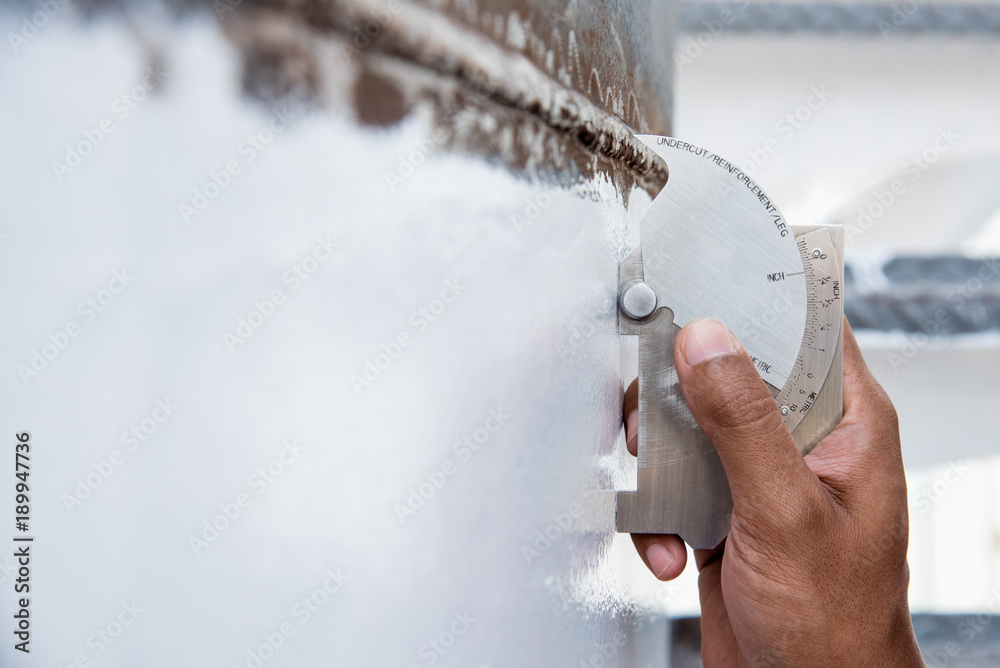What to Anticipate During a Thorough Tank Welding Inspection
What to Anticipate During a Thorough Tank Welding Inspection
Blog Article
A Detailed Introduction of Container Welding Inspection Requirements and Methodologies for Improved Weld Top Quality and Performance
The importance of welding assessment criteria in the production of tanks can not be overemphasized, as they serve as the foundation for ensuring weld integrity and functional integrity. Different examination strategies, including aesthetic analyses and advanced non-destructive testing techniques, are critical in determining potential defects that might compromise efficiency.
Significance of Welding Inspection Specifications

Welding inspection requirements incorporate a series of requirements, including product requirements, welding procedures, and qualifications of workers associated with the welding procedure. By enforcing these criteria, organizations can systematically identify and correct potential defects, therefore decreasing the possibility of costly repair services or catastrophic failings. Furthermore, rigorous examination techniques foster a society of liability and accuracy, urging welders to keep high degrees of craftsmanship.

Common Welding Evaluation Techniques


Ultrasonic Checking (UT) is another widespread method, using high-frequency sound waves to spot interior imperfections that might not show up externally. This method is particularly effective for recognizing gaps or inclusions within the weld steel. Magnetic Bit Testing (MT) is also widely made use of, especially for ferromagnetic products, as it exposes surface and near-surface problems with the application of magnetic areas and ferrous particles.
Additionally, Liquid Penetrant Testing (PT) finds surface-breaking problems by using a penetrant to the weld and afterwards using a developer to extract the penetrant. Each of these techniques adds to a thorough inspection strategy, making sure that welds meet the rigid high quality criteria called for in storage tank building.
Governing Criteria and Conformity
Regulatory standards and compliance are crucial elements in guaranteeing the security and integrity of welded frameworks in container construction - Tank Welding Inspection. These standards serve to develop minimum needs for material residential or commercial properties, welding procedures, and evaluation practices, thus minimizing the risk of architectural failures and improving total efficiency
Key companies, such as the American Society of Mechanical Designers (ASME) and the American Welding Society (AWS), provide guidelines that are commonly embraced in the industry. Conformity with these criteria not only makes sure adherence to best methods yet also meets legal and contractual investigate this site responsibilities, protecting the passions of stakeholders.
Governing bodies frequently mandate adherence to certain codes, such as ASME Code Section IX for welding qualifications and API 650 for welded tanks. These codes outline requirements for welding techniques, certifications of workers, and testing methods to verify weld integrity.
Routine audits and inspections are essential to preserving conformity, as they aid recognize variances from established standards. Non-compliance can lead to considerable penalties, job delays, and safety and security threats. Thus, a robust understanding of governing requirements and a commitment to conformity are paramount in achieving premium and durable welded container structures.
Non-Destructive Evaluating Methods
Just how can the honesty of bonded frameworks be ensured without creating damage? Non-destructive screening (NDT) methods supply a durable option, allowing examiners to review weld top quality without endangering the material - Tank Welding Inspection. Amongst the most common NDT techniques are ultrasonic screening (UT), radiographic screening (RT), magnetic bit screening (MT), and dye penetrant testing (PT)
Ultrasonic testing employs high-frequency sound waves to find internal imperfections and characterize material residential or commercial properties. It offers specific dimensions and is particularly effective for thick products. Radiographic testing involves passing X-rays or gamma rays internet through the weld, producing images that reveal architectural flaws such as splits or voids. This technique is indispensable for evaluating the integrity of intricate welds.
Magnetic fragment testing is suited for ferromagnetic materials, where magnetic areas expose surface and near-surface interruptions. Color penetrant testing uses a fluid dye to highlight surface-breaking defects, making it an efficient approach for non-porous materials.
Each of my response these NDT techniques has distinctive benefits, allowing for detailed analyses tailored to details materials and welding processes. By executing these techniques, markets can ensure the dependability and safety and security of bonded frameworks, inevitably boosting general performance.
Enhancing Weld Top Quality Through Evaluation
Reliable examination plays a crucial function in boosting weld high quality, offering as a crucial checkpoint in the manufacture procedure. By determining possible flaws early, assessments mitigate the risk of compromised structural integrity and make certain compliance with industry standards. Using a combination of visual evaluations, non-destructive screening (NDT) techniques, and mechanical assessments, examiners can identify concerns such as porosity, splits, and insufficient combination.
Applying a robust inspection protocol not just enhances the total top quality of welds but also cultivates a culture of liability among welders and producers. Routine training and certification of examination personnel guarantee that they are geared up with the needed abilities to identify and attend to possible issues properly. This proactive strategy minimizes rework and connected expenses, inevitably adding to project effectiveness.
Additionally, extensive documents of assessment searchings for provides important insights into persisting issues, helping with continual improvement in welding practices. By leveraging advanced modern technologies, such as automated ultrasonic screening or digital radiography, weld high quality can be boosted via extra specific analyses. In verdict, an extensive evaluation procedure is vital in accomplishing high-quality welds, making sure safety and security, integrity, and long life in storage tank manufacture.
Conclusion
In final thought, the implementation of rigorous container welding evaluation requirements and methodologies is essential for ensuring weld honesty and performance. By using a combination of aesthetic evaluations, non-destructive testing approaches, and adherence to governing requirements, organizations can efficiently determine and reduce possible defects.
Report this page